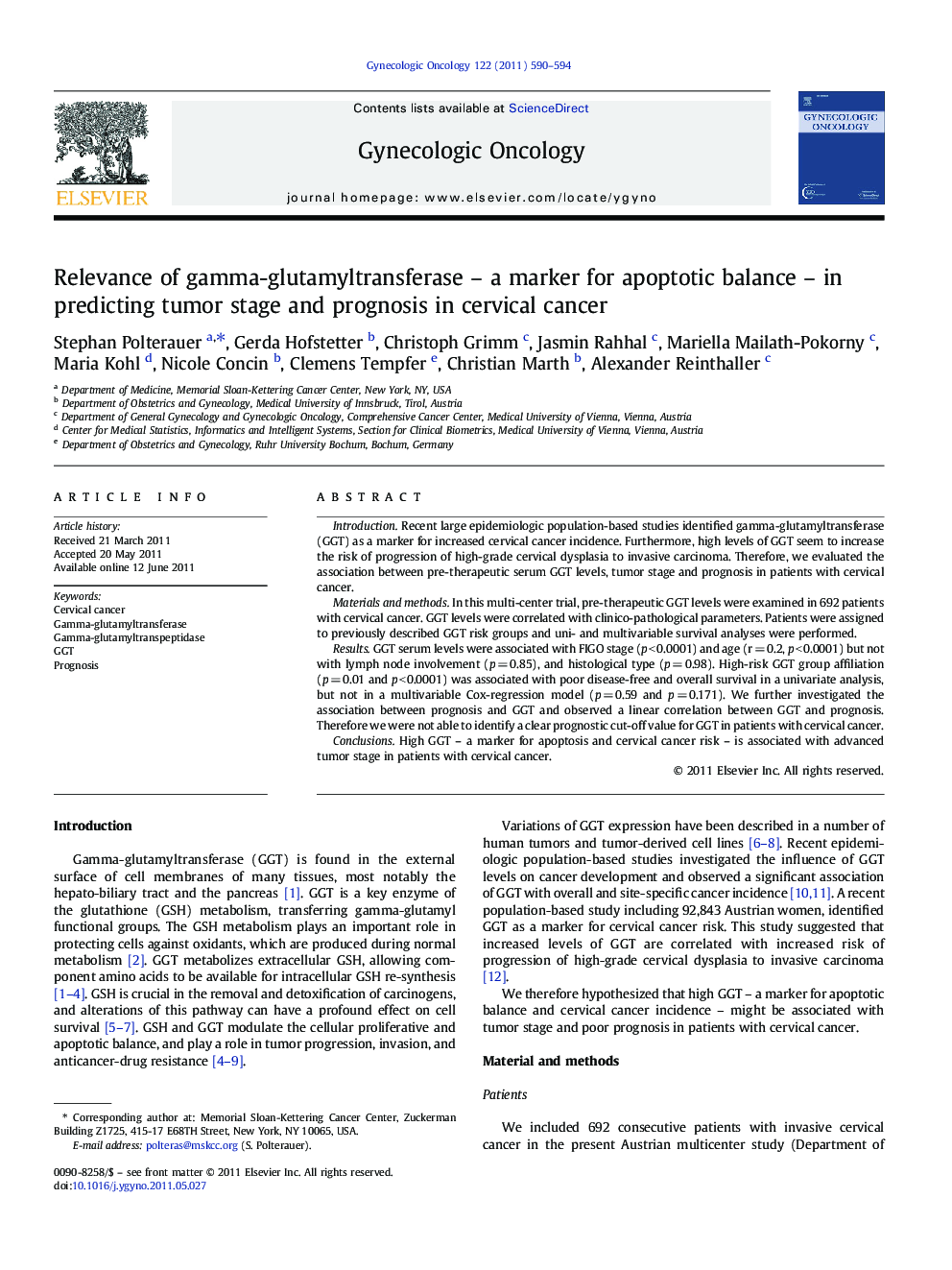| Article ID | Journal | Published Year | Pages | File Type |
|---|---|---|---|---|
| 3945573 | Gynecologic Oncology | 2011 | 5 Pages |
IntroductionRecent large epidemiologic population-based studies identified gamma-glutamyltransferase (GGT) as a marker for increased cervical cancer incidence. Furthermore, high levels of GGT seem to increase the risk of progression of high-grade cervical dysplasia to invasive carcinoma. Therefore, we evaluated the association between pre-therapeutic serum GGT levels, tumor stage and prognosis in patients with cervical cancer.Materials and methodsIn this multi-center trial, pre-therapeutic GGT levels were examined in 692 patients with cervical cancer. GGT levels were correlated with clinico-pathological parameters. Patients were assigned to previously described GGT risk groups and uni- and multivariable survival analyses were performed.ResultsGGT serum levels were associated with FIGO stage (p < 0.0001) and age (r = 0.2, p < 0.0001) but not with lymph node involvement (p = 0.85), and histological type (p = 0.98). High-risk GGT group affiliation (p = 0.01 and p < 0.0001) was associated with poor disease-free and overall survival in a univariate analysis, but not in a multivariable Cox-regression model (p = 0.59 and p = 0.171). We further investigated the association between prognosis and GGT and observed a linear correlation between GGT and prognosis. Therefore we were not able to identify a clear prognostic cut-off value for GGT in patients with cervical cancer.ConclusionsHigh GGT – a marker for apoptosis and cervical cancer risk – is associated with advanced tumor stage in patients with cervical cancer.
Graphical abstractFigure optionsDownload full-size imageDownload as PowerPoint slideResearch highlights► Gamma-glutamyltransferase (GGT) is a marker for apoptosis and is known to predict the risk of cervical cancer development. ► High pre-therapeutic serum GGT is associated with advanced tumor stage in patients with cervical cancer. ► High serum GGT was associated with impaired disease-free and overall survival in Kaplan–Meier analysis.
